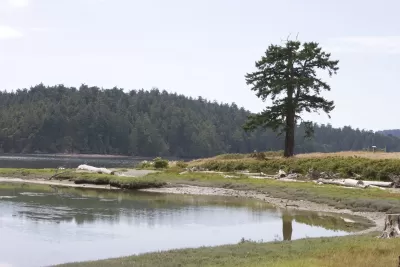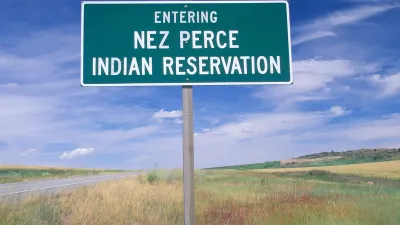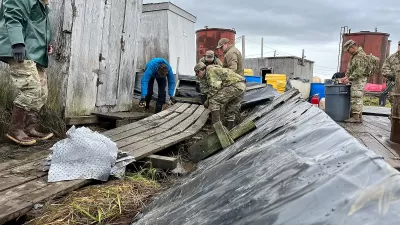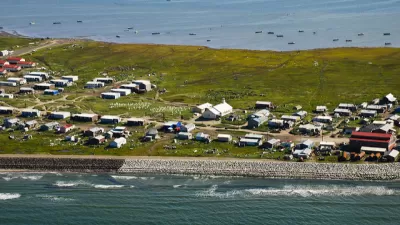Tribal communities are preparing for climate impacts by drawing on their deep understanding of the relationship between humans and the natural environment.

Indigenous communities across the country are leading the way in addressing climate change, which is directly affecting tribal lands, reports Nicola Jones. The tribes’ connections to natural resources and understanding of ecosystems have been integral in the development of forward-thinking practices and policies to protect the environment.
"These are communities that have relied on the land for generations, building an intimate knowledge of the natural cycles of plants, animals, and weather. Unlike the traditional Western worldview that humanity can and should seek dominion over the environment, indigenous populations tend to view humanity as part of an interconnected whole," writes Jones.
The Swinomish in Washington state, for example, have launched projects to protect salmon runs and restore oyster beds. "For the Swinomish, as for many indigenous groups, it makes little sense to talk about environmental health and human health separately; they are deeply intertwined, with community cohesion and traditional food security being equally vital," says Jones.
FULL STORY: How Native Tribes Are Taking the Lead on Planning for Climate Change

Planetizen Federal Action Tracker
A weekly monitor of how Trump’s orders and actions are impacting planners and planning in America.

Map: Where Senate Republicans Want to Sell Your Public Lands
For public land advocates, the Senate Republicans’ proposal to sell millions of acres of public land in the West is “the biggest fight of their careers.”

Restaurant Patios Were a Pandemic Win — Why Were They so Hard to Keep?
Social distancing requirements and changes in travel patterns prompted cities to pilot new uses for street and sidewalk space. Then it got complicated.

Platform Pilsner: Vancouver Transit Agency Releases... a Beer?
TransLink will receive a portion of every sale of the four-pack.

Toronto Weighs Cheaper Transit, Parking Hikes for Major Events
Special event rates would take effect during large festivals, sports games and concerts to ‘discourage driving, manage congestion and free up space for transit.”

Berlin to Consider Car-Free Zone Larger Than Manhattan
The area bound by the 22-mile Ringbahn would still allow 12 uses of a private automobile per year per person, and several other exemptions.
Urban Design for Planners 1: Software Tools
This six-course series explores essential urban design concepts using open source software and equips planners with the tools they need to participate fully in the urban design process.
Planning for Universal Design
Learn the tools for implementing Universal Design in planning regulations.
Heyer Gruel & Associates PA
JM Goldson LLC
Custer County Colorado
City of Camden Redevelopment Agency
City of Astoria
Transportation Research & Education Center (TREC) at Portland State University
Camden Redevelopment Agency
City of Claremont
Municipality of Princeton (NJ)





























